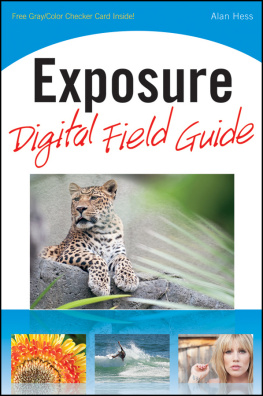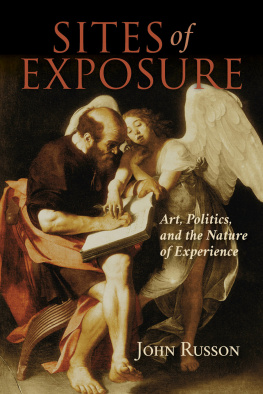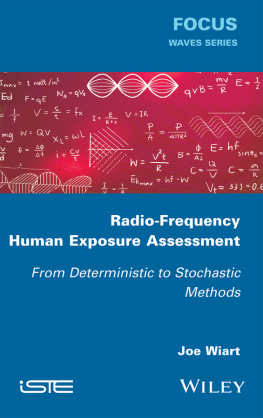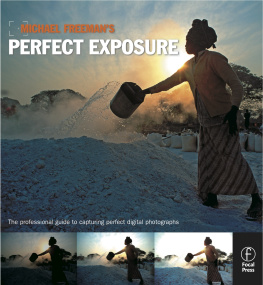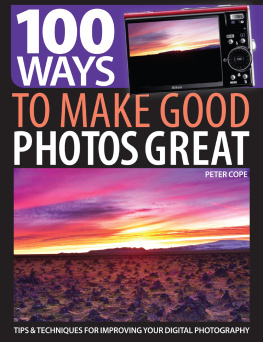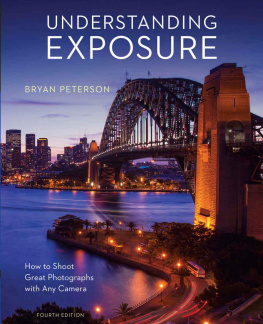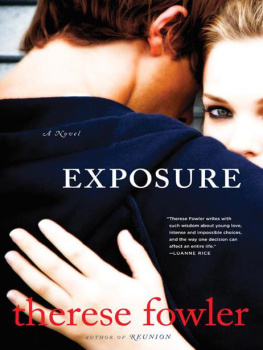John Greengo - The Enthusiasts Guide to Exposure
Here you can read online John Greengo - The Enthusiasts Guide to Exposure full text of the book (entire story) in english for free. Download pdf and epub, get meaning, cover and reviews about this ebook. year: 2017, publisher: Rocky Nook, genre: Children. Description of the work, (preface) as well as reviews are available. Best literature library LitArk.com created for fans of good reading and offers a wide selection of genres:
Romance novel
Science fiction
Adventure
Detective
Science
History
Home and family
Prose
Art
Politics
Computer
Non-fiction
Religion
Business
Children
Humor
Choose a favorite category and find really read worthwhile books. Enjoy immersion in the world of imagination, feel the emotions of the characters or learn something new for yourself, make an fascinating discovery.

- Book:The Enthusiasts Guide to Exposure
- Author:
- Publisher:Rocky Nook
- Genre:
- Year:2017
- Rating:5 / 5
- Favourites:Add to favourites
- Your mark:
- 100
- 1
- 2
- 3
- 4
- 5
The Enthusiasts Guide to Exposure: summary, description and annotation
We offer to read an annotation, description, summary or preface (depends on what the author of the book "The Enthusiasts Guide to Exposure" wrote himself). If you haven't found the necessary information about the book — write in the comments, we will try to find it.
The Enthusiasts Guide to Exposure — read online for free the complete book (whole text) full work
Below is the text of the book, divided by pages. System saving the place of the last page read, allows you to conveniently read the book "The Enthusiasts Guide to Exposure" online for free, without having to search again every time where you left off. Put a bookmark, and you can go to the page where you finished reading at any time.
Font size:
Interval:
Bookmark:
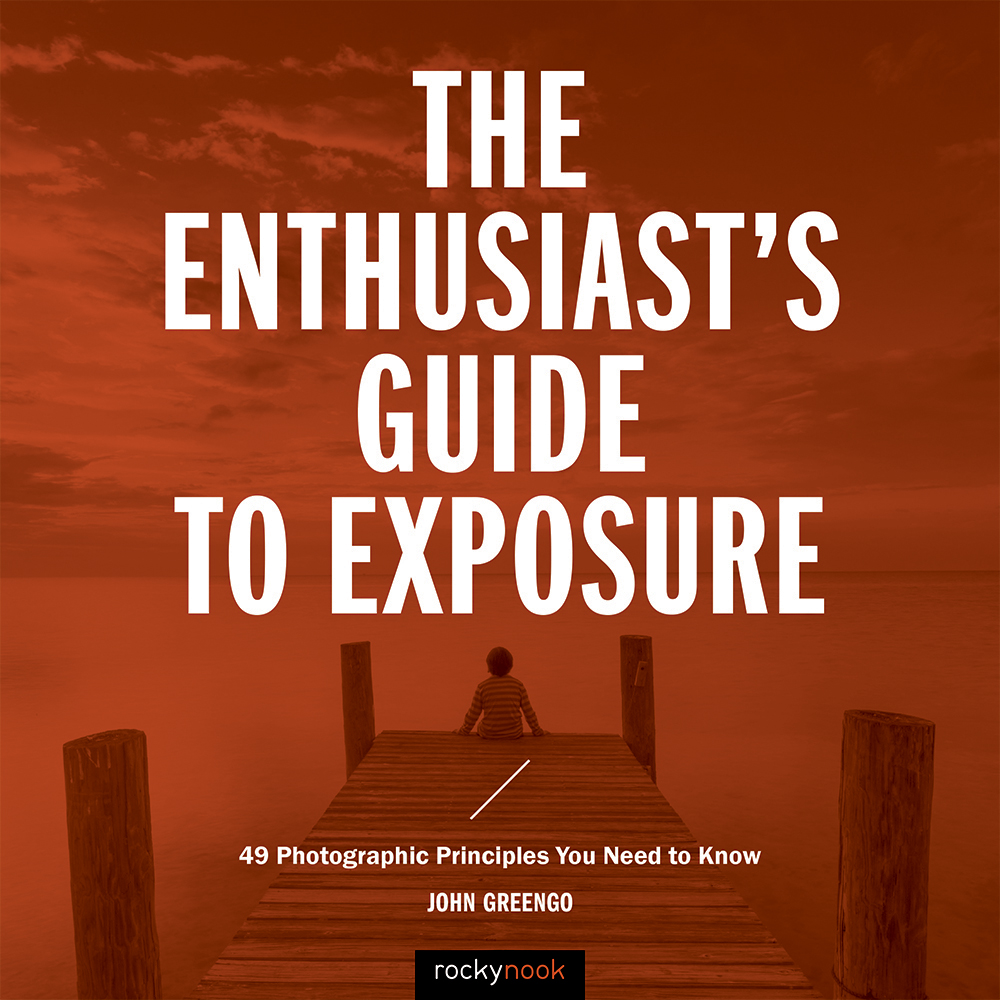
ENTHUSIASTS
GUIDE
TO EXPOSURE

49 Photographic Principles You Need to Know
JOHN GREENGO

THE ENTHUSIASTS GUIDE TO EXPOSURE:
49 PHOTOGRAPHIC PRINCIPLES YOU NEED TO KNOW
John Greengo
johngreengo.com
Project editor: Maggie Yates
Project manager: Lisa Brazieal
Marketing manager: Mercedes Murray
Copyeditor: Maggie Yates
Layout and type: WolfsonDesign
Cover design: WolfsonDesign
Indexer: Maggie Yates
ISBN: 978-1-68198-258-8
1st Edition (1st printing, August 2017)
2017 John Greengo
All images John Greengo unless otherwise noted
Rocky Nook Inc.
1010 B Street, Suite 350
San Rafael, CA 94901
USA
www.rockynook.com
Distributed in the U.S. by Ingram Publisher Services
Distributed in the UK and Europe by Publishers Group UK
Library of Congress Control Number: 2016960856
All rights reserved. No part of the material protected by this copyright notice may be reproduced or utilized in any form, electronic or mechanical, including photocopying, recording, or by any information storage and retrieval system, without written permission of the publisher.
Many of the designations in this book used by manufacturers and sellers to distinguish their products are claimed as trademarks of their respective companies. Where those designations appear in this book, and Rocky Nook was aware of a trademark claim, the designations have been printed in caps or initial caps. All product names and services identified throughout this book are used in editorial fashion only and for the benefit of such companies with no intention of infringement of the trademark. They are not intended to convey endorsement or other affiliation with this book.
While reasonable care has been exercised in the preparation of this book, the publisher and author assume no responsibility for errors or omissions, or for damages resulting from the use of the information contained herein or from the use of the discs or programs that may accompany it.
Printed in China.
To Mom and Dad:
Anything worth doing is worth doing right.


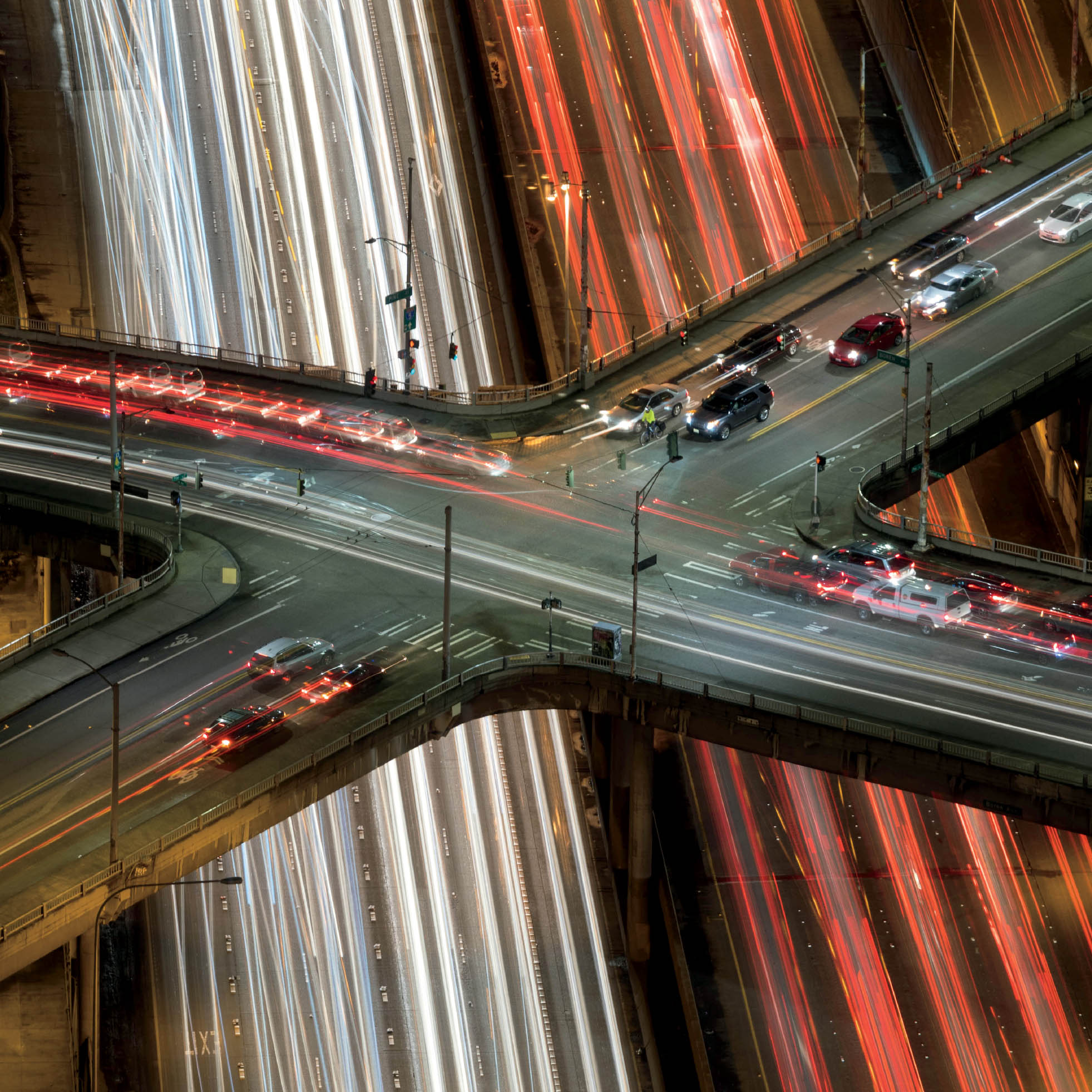

Photography represents a wonderful mixture of art and technology, but ultimately every photo will be judged primarily on its artistic merit. Long before any image is final, there are many technical issues that must be addressed. The first of those issues is the light. One must understand how the camera works and how best to adjust the settings to achieve the optimum results. There are many criteria that must be understoodsome under your control, some notand all are a part of a chain of decisions that must be considered before the shutter is clicked.

EXPOSURE IS LIGHT striking the sensor in our digital cameras; or, if you prefer the old-school photographic process, exposure is light hitting the film. How this is achieved profoundly affects the outcome of the final photograph. Getting it right can be bit of a puzzle, but when you know how the pieces work, the process becomes quite easy.
Certainly the quantity of light is very importantwe dont want to let in too much or too little light; we want just the right amount. There are a variety of tools you can use to measure the intensity of the light that will hit your digital sensor or the film in your camera. Use this measurement value to decide how to set up your shot according to what we want to achieve for that particular photograph.
Most cameras offer several automatic exposure modes that meter the light and choose optimal settings, but this technique comes with a catch: even though your modern camera is filled with a vast array of advanced electronics, it cant tell what you are photographing or intuit the style of photograph you desire.
For simple photos, these auto exposure programs are just fine. If you want to concentrate on other things, put your camera into full auto mode and let the camera sweat the details for you. All modern cameras will to a good job at automatically exposing the right amount of light to give a decent resulting photograph. If you arent happy with the way your photos are turning out, or you are looking to showcase your own vision, youll need to start taking manual control.
Beyond getting the correct amount of light, the way in which the light is recorded has a profound effect on your final image. The photographic exposure tools we use are known as the exposure triangle. The three points of this triangle are shutter speed, aperture, and ISO. The combination of these three parameters offers a plethora of available options for interpreting a given scene.
Great photographs often involve interesting subjects in interesting actions. How you frame, compose, and expose your photo will have a great impact on how your subject is viewed. With the tools of the exposure triangle, you can control the cameras settings to emphasize the elements that are most important and diminish those that are less so.
This interpretation of the scene is what makes a photograph unique to the photographer. Rarely do two photographers choose to capture a subject in exactly the same way. Everyone sees and thinks differently about their subjects. Controlling this creative process is one of the best attributes of photography; not only do you get to record what you see and experience, you can add your creative ideas to the mix to create unique photos that reflect the way you see the world.
Harnessing the exposure system is key to taking control of your photographs. Each of the individual elements is rather simple to understand. Its only when using all the elements together that you see the multitude of options available. This incredible variety is a good thing. It will give us the greatest freedom when it comes to creating a unique photograph. First we must master each individual part of the exposure triangle, which isnt difficult at all. Lets get started.

1.1 Taking control of your cameras exposure system will ensure that your photos are captured and displayed in the manner that you think looks best.
1/2 sec.; f/16; ISO 100; Canon 5DSR; EF24-70mm f/4L IS USM @ 55mm

Font size:
Interval:
Bookmark:
Similar books «The Enthusiasts Guide to Exposure»
Look at similar books to The Enthusiasts Guide to Exposure. We have selected literature similar in name and meaning in the hope of providing readers with more options to find new, interesting, not yet read works.
Discussion, reviews of the book The Enthusiasts Guide to Exposure and just readers' own opinions. Leave your comments, write what you think about the work, its meaning or the main characters. Specify what exactly you liked and what you didn't like, and why you think so.

